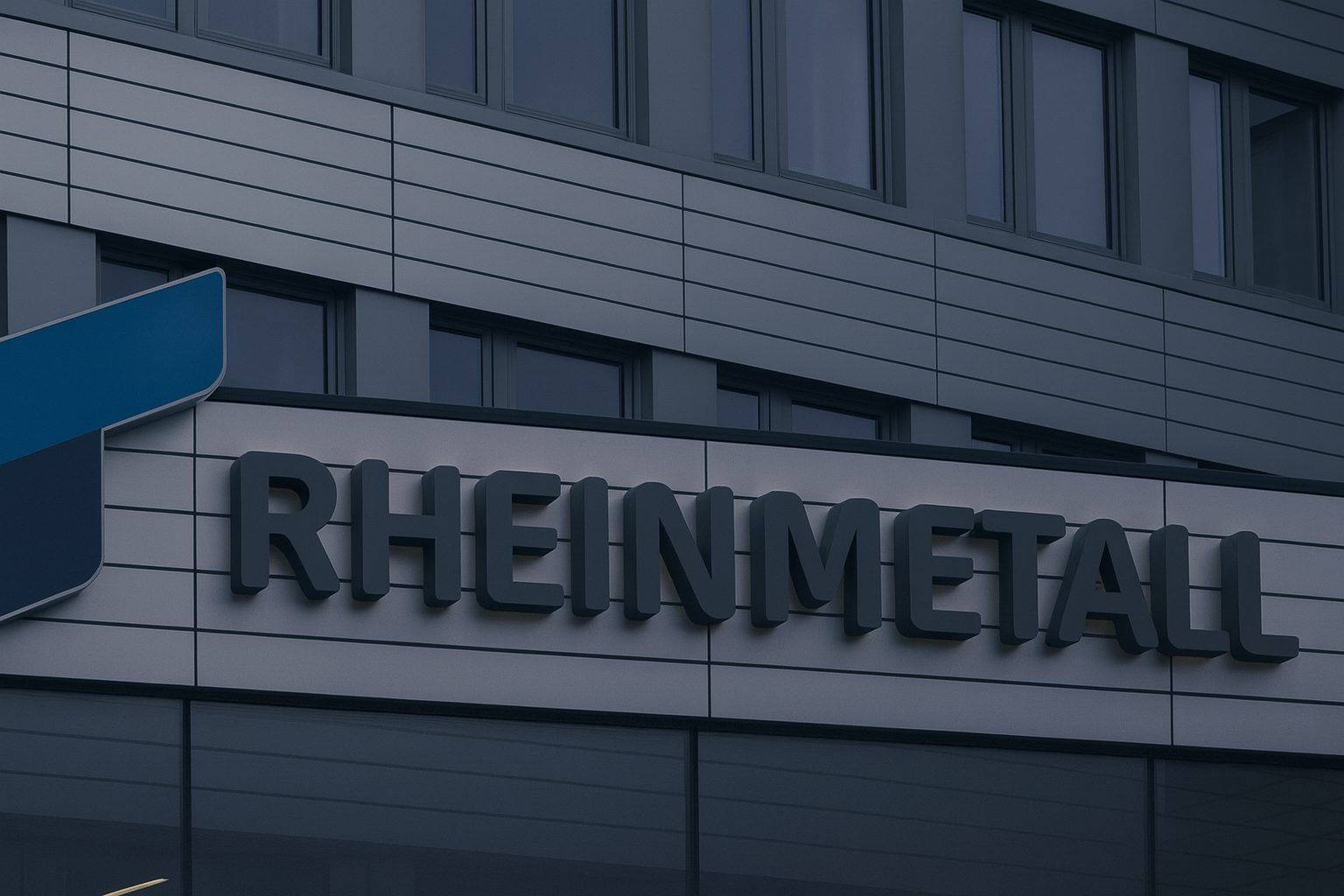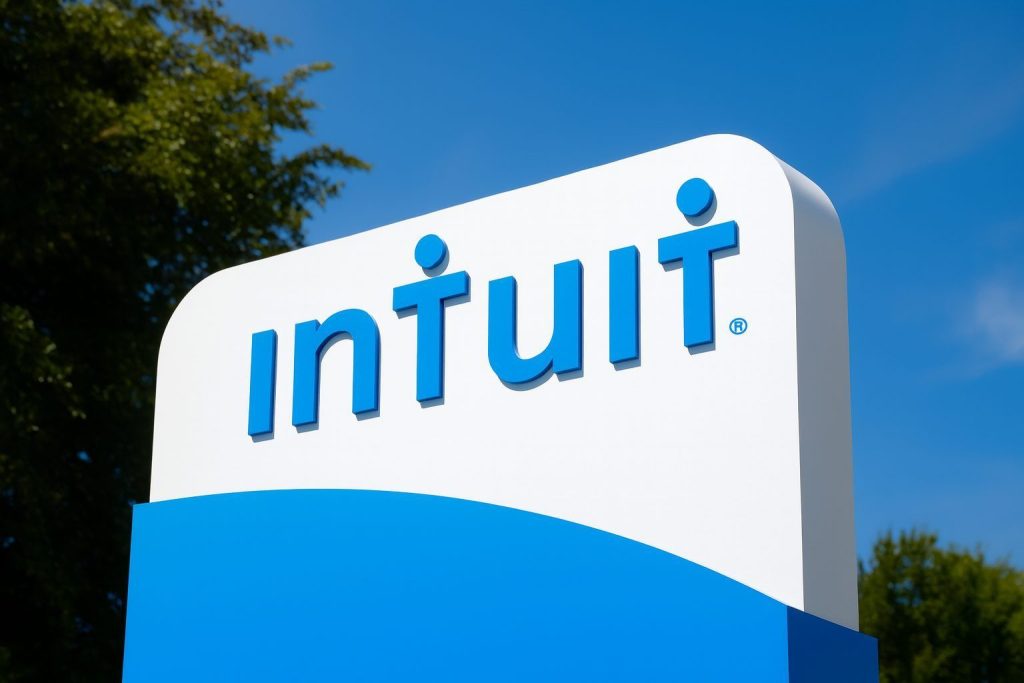Frankfurt am Main – 25 November 2025
After one of the sharpest pullbacks in its multi‑year rally, German defence group Rheinmetall AG (Xetra: RHM, ticker: RHM.DE) enters Tuesday’s session under close watch. The stock is trading almost 20% below its early‑November peak, even as the company reports record order books, confirms strong 2025 guidance and lays out an ultra‑ambitious 2030 roadmap. [1]
Below is a structured look at where RHM.DE stands today, what’s been driving the latest volatility and the key catalysts investors are likely to focus on over the coming days and months.
Rheinmetall share price: a sharp correction into Tuesday’s session
As of the latest available Xetra close on Monday, 24 November 2025, Rheinmetall shares finished at €1,443.00, down 5.0% on the day. That drop followed a 7.2% decline on Friday and a 7.0% fall on Wednesday, leaving the stock about 16% lower than a week earlier and roughly 19% below intraday highs above €1,780 seen on 6 November. [2]
Trading volumes have spiked during the sell‑off: around 552,000 shares changed hands on Monday, noticeably above the recent average, pointing to a phase of forced or emotionally driven repositioning rather than a quiet drift lower. [3]
Yet despite the bruising moves of the last few sessions, Rheinmetall’s long‑term chart still looks extraordinary:
- The stock is up about 150% year‑to‑date and roughly 147% over the past 12 months, vastly outperforming major equity indices. [4]
- Over the last decade, it has delivered an annualised return of ~42%, compared with roughly 11% per year for the S&P 500 when translated into euros. [5]
In other words: for long‑term holders this is a painful correction, not (so far) a broken story.
Why has RHM.DE been falling? Peace‑talk headlines, sector rotation and “too much, too fast”
1. Peace‑framework hopes hammer European defence stocks
Rheinmetall’s latest slide accelerated on Monday as European defence stocks hit their lowest levels since April, with traders reacting to signs of progress in talks over a potential framework for peace in Ukraine. [6]
Coverage of Monday’s session highlighted that:
- Optimism over a possible de‑escalation in Ukraine encouraged investors to rotate out of defence names and into more cyclical or growth‑oriented sectors. [7]
- Rheinmetall’s share price “came under heavy pressure” as part of a broader derating of the sector rather than because of company‑specific bad news. TS2 Tech
This illustrates a key paradox for defence stocks: good geopolitical news can be bad share‑price news, at least in the short term.
2. Profit‑taking after an ultra‑bullish Capital Markets Day
Just a week earlier, Rheinmetall had wowed the market at its Capital Markets Day by guiding for:
- 2030 sales of about €50 billion, roughly five times its 2024 revenue of €9.8 billion.
- A group operating margin above 20%. [8]
The announcement briefly made Rheinmetall the top gainer on the DAX on 18 November, but analysts and commentators also warned that expectations were becoming extremely demanding and vulnerable to any hint of disappointment. [9]
The subsequent sell‑off has all the hallmarks of “buy the rumour, sell the fact”: a stock that ran ahead of the news retraces once the big promises are officially on the table. TS2 Tech+1
3. Noise around naval programmes and German budget politics
Sentiment has also been shaken by headlines around Germany’s F126 frigate programme and the broader reshaping of its naval procurement:
- Reports suggest Berlin is considering reshaping or replacing the troubled €8–10 billion F126 project, with German shipyard Naval Vessels Lürssen (NVL) — which Rheinmetall is in the process of acquiring — potentially stepping into a larger role. [10]
- At the same time, Germany has been slow to finalise elements of its federal budget, delaying certain orders, even though overall defence spending is still set to rise sharply in the coming years. [11]
While these developments may ultimately strengthen Rheinmetall’s position in naval systems, investors dislike uncertainty in multi‑billion‑euro programmes, adding to near‑term volatility.
Fundamentals remain robust: record order backlog and double‑digit growth
Stepping away from the ticker, the operational picture remains strong.
In its Q3 2025 financial report, Rheinmetall reported for the first nine months of the year: [12]
- Group sales of €7.5 billion, up 20% year‑on‑year.
- Operating result of €835 million, an 18% increase versus the prior period.
- Defence operating profit of €825 million, with a 13.6% margin.
- A record order backlog (“Rheinmetall Backlog”) of €64 billion, up sharply from €52 billion a year earlier.
At the same time, the company is deliberately front‑loading investment:
- Operating free cash flow was deeply negative at –€813 million, driven by heavy capex for new plants, inventory build‑up and delayed order placements by the German government. [13]
Despite the cash drain, management confirmed its outlook for 2025, expecting:
- 25–30% growth in full‑year sales (versus €9.75 billion in 2024).
- An operating margin of around 15.5%, slightly above last year’s 15.2%. [14]
For investors, this translates into a classic “invest now, harvest later” profile: earnings are growing solidly, but reported cash flow looks weak while Rheinmetall ramps capacity for what it believes will be years of elevated demand.
Growth pipeline: new plants, new contracts and a potential mega‑deal
Recent months have brought a steady stream of project news that helps explain why the backlog is so large — and why management feels confident enough to target €50 billion in 2030 sales.
1. Lithuanian 155 mm ammunition plant on NATO’s eastern flank
On 3 November, Rheinmetall broke ground on a major 155 mm artillery ammunition plant in Baisogala, Lithuania, to be operated via the joint venture Rheinmetall Defence Lietuva. [15]
Key facts from the company’s press release:
- Up to €300 million in investment.
- Production capacity of “several tens of thousands” of shells per year.
- Around 150 new jobs.
- Additional plans for a Centre of Excellence for propellant charges, capable of producing several hundred thousand propellant charge modules annually.
The plant is slated to begin operations in 2026, with a gradual ramp‑up from 2027 depending on order volume. [16]
2. First Italian contract for the Lynx‑based A2CS combat vehicles
In early November, Rheinmetall and its partner Leonardo announced the first supply contract under Italy’s A2CS – Army Armoured Combat System programme: [17]
- The joint venture Leonardo Rheinmetall Military Vehicles will deliver 21 tracked armoured vehicles, including five Lynx KF‑41s with Rheinmetall’s Lance turret and 16 vehicles with Leonardo’s Hitfist turret.
- The agreement includes options for 30 additional vehicles, plus training and simulation systems.
This first batch is modest in size but strategically important — the broader A2CS programme envisages up to 1,050 vehicles, pointing to a multi‑billion‑euro opportunity over time. [18]
3. €61 million contract to modernise Germany’s Army Combat Training Centre
On 19 November, defence media reported that Rheinmetall had been awarded a €61 million gross contract by the Bundeswehr to modernise the Army Combat Training Centre in Saxony‑Anhalt. [19]
The project:
- Integrates a new digital radio system and expands existing communications infrastructure.
- Adds a 5G‑based broadband network and software from subsidiary Blackned to support digital command‑and‑control and NATO‑level interoperability.
- Runs through early 2028, offering several years of relatively predictable revenue. [20]
4. Multi‑billion ammunition contract in the making
In a separate interview, CEO Armin Papperger told Reuters that Rheinmetall is in the final stages of negotiating a multi‑billion‑euro ammunition supply contract: [21]
- He described the potential deal as “a two‑digit‑billion euro figure”, implying at least €10 billion in value over its lifetime.
- The company is simultaneously discussing a satellite system delivery with the German government.
- Papperger also said he expects around €5 billion of orders over the next 12 months from the Leonardo joint venture focused on armoured vehicles. [22]
5. Romania and further European projects
According to regional defence reporting, Romania is close to finalising a multi‑billion‑euro deal with Rheinmetall to build tanks and other military equipment locally — another marker of how central the company has become to Europe’s rearmament drive. [23]
Taken together, these projects help explain why Rheinmetall’s order backlog is swelling and why management is comfortable talking about decade‑long growth visibility, even while short‑term share price moves look erratic. [24]
2030 vision: five‑fold sales growth and a new segment structure
The centrepiece of Rheinmetall’s investment story today is its 2030 strategy, unveiled on 18 November. According to the company’s presentation and Reuters reporting, the plan includes: [25]
- Target sales of ~€50 billion by 2030, roughly five times 2024 revenue.
- A group operating margin above 20%.
- A new organisational structure with dedicated segments for Naval, Air Defence and Digital, alongside Weapons & Ammunition and Vehicle Systems.
- Exit from the loss‑making civilian Power Systems division, which is slated for sale by the first half of 2026.
- A stronger focus on M&A, exemplified by the planned acquisition of NVL, the naval division of Lürssen, which is involved in key German and international shipbuilding programmes. [26]
Management argues that:
- Weapons & Ammunition and Vehicle Systems will account for the bulk of 2030 sales, driven by NATO inventory rebuilding and large land‑systems programmes.
- Air defence — boosted by growing concern over drone attacks and critical infrastructure protection — could deliver €3–4 billion in annual sales by 2030. [27]
If achieved, these targets would cement Rheinmetall as one of Europe’s premier defence “champions”, with a scope spanning ammunition, vehicles, air defence and naval systems.
Labour and capacity: hiring spree to staff 13 new plants
Meeting those targets requires not just capital, but people.
A feature in The Wall Street Journal published on 25 November highlights Rheinmetall’s massive hiring drive, noting that: [28]
- The company expects to receive more than 275,000 job applications in 2025, up from 257,000 the year before.
- It is increasingly recruiting workers from the automotive sector, as they bring relevant manufacturing skills.
Other analyses underscore that Rheinmetall is:
- Building or expanding 13 plants across Europe, converting some former automotive facilities to defence production. [29]
- Attracting enormous interest as an employer — one report cited 120,000 applications for about 3,000 open roles in Germany alone in the first half of 2025. TS2 Tech+1
This labour pipeline is critical: the company’s €64 billion backlog is only useful if it can staff factories and deliver on time.
Valuation and analyst sentiment: expensive, but with implied upside
Even after the recent sell‑off, Rheinmetall does not trade like a low‑expectations turnaround story.
Quantitative data from equity research platforms suggest that, at recent prices: [30]
- RHM.DE is on a forward price/earnings multiple around 37x, with a price‑to‑book ratio near 15x and a price‑to‑sales multiple above 6x.
- The stock sits about 24% below its 52‑week high, but still more than 120% higher than a year ago.
Nonetheless, sell‑side analysts remain broadly positive:
- J.P. Morgan recently reiterated its “Buy” rating with a price target of €2,250 per share. [31]
- Deutsche Bank lifted its target to €2,100, citing the strong growth outlook and 2030 roadmap. [32]
- Aggregated analyst estimates for the underlying Frankfurt listing and ADR suggest average 12‑month targets in the €2,200–2,300 range, implying sizeable upside from Monday’s €1,443 close — though individual forecasts vary, and targets can change quickly. [33]
Some independent valuation work (for example, from Morningstar, as quoted in secondary analysis) places fair value near €2,220, again indicating potential upside but also highlighting how much growth is already discounted into today’s price. [34]
Key risks for Rheinmetall shareholders
Even supporters of the stock emphasise that Rheinmetall is not a low‑risk investment. Among the main issues frequently cited in research and media coverage: Reuters+3TS2 Tech+3AInvest+3
- Political and peace‑process risk
- A durable peace in Ukraine or a sudden shift in NATO doctrine could slow growth in defence budgets, affecting Rheinmetall’s 2030 revenue ambition even if spending remains structurally higher than pre‑war levels.
- Budget and procurement timing
- Germany’s delayed federal budget already pushed some orders into the second half of 2025, contributing to weak free cash flow despite strong earnings. A repeat could again distort quarterly results. [35]
- Programme and execution risk
- Mega‑projects such as the F126/F127 frigate programmes, new ammunition plants in Lithuania and potential tank production in Romania involve complex political and industrial ecosystems. Delays or scope changes could hurt margins or push revenue to the right. [36]
- Working‑capital and capex intensity
- Building 13 plants, scaling ammunition output and converting civilian factories requires vast upfront spending. As Q3 numbers showed, that can mean deeply negative free cash flow even in strong earnings years. [37]
- Valuation and volatility
- After a decade of ~42% annualised returns, the stock has become highly sensitive to sentiment shifts, leading to double‑digit percentage moves in a matter of days — as demonstrated by November’s 19% drawdown from the highs. [38]
What to watch on 25 November 2025 and over the coming months
1. Deutsches Eigenkapitalforum presentation
Rheinmetall is on the schedule of the Deutsches Eigenkapitalforum 2025 in Frankfurt, with analyst conferences taking place on Tuesday, 25 November. [39]
Investors will listen closely for:
- Any refinement of 2025 guidance following Q3.
- More colour on the multi‑billion ammunition contract and Romanian tank deal.
- Updates on the NVL acquisition and naval strategy.
2. Confirmation of large contracts
Markets will be watching for formal signings of:
- The two‑digit‑billion ammunition deal discussed with Reuters.
- A potential Romanian armoured‑vehicle and tank agreement.
- Additional orders tied to Germany’s rearmament and NATO’s inventory build‑up. [40]
3. Q4 2025 results and 2026 guidance
Looking further out, Rheinmetall’s full‑year 2025 earnings release (currently scheduled for March 2026 on several financial calendars) will be crucial for judging: [41]
- Whether the expected surge in late‑year orders materialised.
- How quickly free cash flow recovers as the big capex wave continues.
- Whether management adjusts its 2030 ambitions upward, downward or not at all.
Bottom line: A structurally strong story colliding with cyclical nerves
On 25 November 2025, Rheinmetall finds itself at an interesting crossroads:
- Structurally, the company is benefiting from one of the strongest defence‑spending cycles Europe has seen in decades, with a €64 billion backlog, double‑digit sales growth and a credible plan to quintuple sales by 2030. [42]
- Tactically, the stock is digesting months of outsized gains, lofty expectations and a wave of geopolitical headlines that temporarily make defence less fashionable in trading rooms. [43]
For readers following RHM.DE, the key questions now are less about whether Rheinmetall has orders — it does — and more about execution, cash conversion, and how long the political consensus for elevated defence spending holds.
As always, this article is for informational and journalistic purposes only and does not constitute investment advice or a recommendation to buy or sell any security. Anyone considering an investment in Rheinmetall or other defence names should carefully assess their own risk tolerance, time horizon and ethical considerations, and consult a licensed financial adviser where appropriate.
References
1. www.investing.com, 2. www.investing.com, 3. www.investing.com, 4. portfolioslab.com, 5. portfolioslab.com, 6. www.bloomberg.com, 7. www.bloomberg.com, 8. www.reuters.com, 9. www.reuters.com, 10. www.ft.com, 11. www.rheinmetall.com, 12. www.rheinmetall.com, 13. www.rheinmetall.com, 14. www.rheinmetall.com, 15. www.rheinmetall.com, 16. www.rheinmetall.com, 17. www.rheinmetall.com, 18. www.rheinmetall.com, 19. defence-industry.eu, 20. defence-industry.eu, 21. www.reuters.com, 22. www.reuters.com, 23. thedefensepost.com, 24. www.rheinmetall.com, 25. www.reuters.com, 26. www.reuters.com, 27. www.reuters.com, 28. www.wsj.com, 29. www.rheinmetall.com, 30. www.stockopedia.com, 31. www.marketscreener.com, 32. www.investing.com, 33. www.marketwatch.com, 34. www.ainvest.com, 35. www.rheinmetall.com, 36. www.rheinmetall.com, 37. www.rheinmetall.com, 38. portfolioslab.com, 39. www.eigenkapitalforum.com, 40. www.reuters.com, 41. www.stockopedia.com, 42. www.rheinmetall.com, 43. www.bloomberg.com







